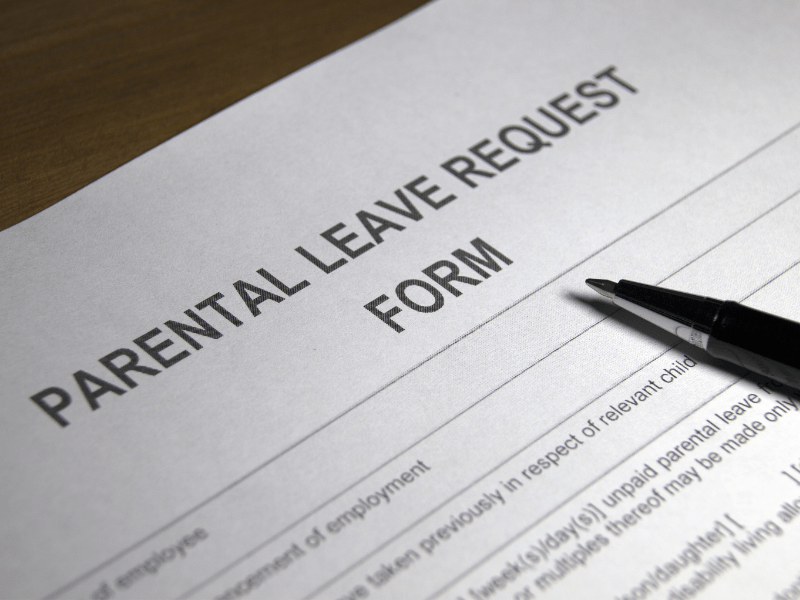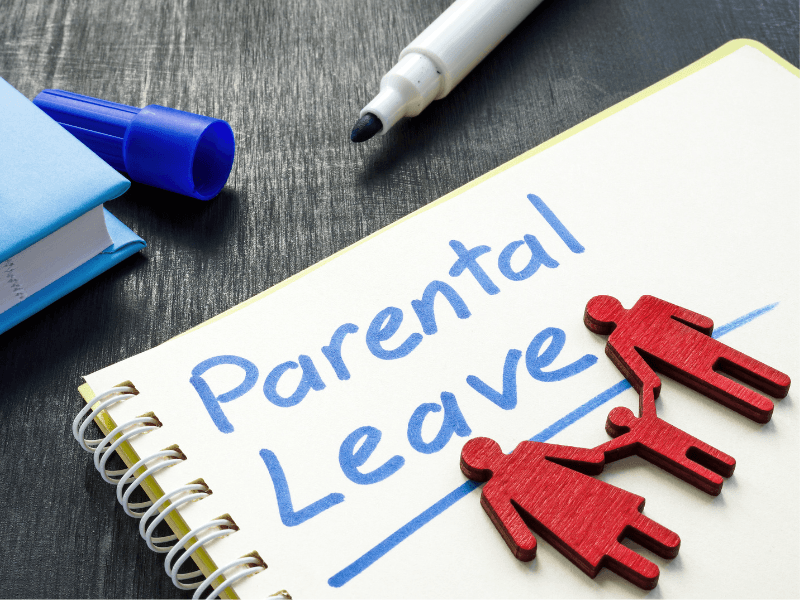Parental Leave in the US: All you need to know
Last Updated on October 16, 2024 by VantagePoint
Parental leave has become a critical topic of discussion in the United States. For new parents, navigating the world of parental leave—whether it’s maternity, paternity, or family leave—can be overwhelming. Unlike many developed countries, the U.S. lacks a comprehensive federal policy guaranteeing paid parental leave, leaving many employees to juggle family responsibilities with work commitments.
Understanding the current parental leave policies, laws, and trends can make a huge difference for both employees and employers.
At Vantage Point Benefit Administrators, we are committed to helping organizations create benefits solutions that empower their teams to balance work and family life.
What is Parental Leave?
Parental leave refers to time off from work granted to parents, typically after the birth or adoption of a child. Unlike maternity leave and paternity leave, which are specific to the mother or father, parental leave applies to both parents. It allows parents to bond with their new child and attend to their health and well-being.
The term “parental leave” is often used interchangeably with “family leave” but they can differ depending on the employer or the state. The goal is to provide time off for childcare without risking job security.
Current Parental Leave Laws in the US
The United States does not have a federal paid parental leave law, but employees are protected under the Family and Medical Leave Act (FMLA). Under FMLA, eligible employees can take up to 12 weeks of unpaid, job-protected leave for family and medical reasons, including the birth or adoption of a child. However, to qualify for FMLA, employees must meet several conditions:
- Worked at least 1,250 hours in the past 12 months.
- Be employed by a company with 50+ employees.
U.S. businesses operating in multiple states face unique challenges when applying FMLA, as each state adds its specific regulations, provisions, and nuances to the overarching federal framework.

How does FMLA Leave Work?
While FMLA offers some job security, it does not guarantee paid leave. However, some states have stepped up to offer paid parental leave. For example:
- California provides up to 8 weeks of paid family leave at around 60-70% of wages.
- New York: Since 2016, New York has had the nation’s “strongest Paid Family Leave policy,” offering up to 12 weeks of paid, job-protected leave to bond with a new child, care for a seriously ill family member (now includes siblings), support loved ones when a spouse or partner is called to active duty abroad.
Eligible employees receive about 67% of their average pay and continued healthcare coverage. Employers should be aware of their responsibilities under this law.
Employees also receive 40-56 hours of sick leave, depending on company size. Large employers (100+ employees) must provide 56 hours of paid leave, medium-sized employers (5-99 employees) 40 hours of paid leave, and small employers 40 hours, which may be unpaid.
New York’s Military Family Leave law provides up to 10 days of leave for spouses of service members on active duty.
- Washington offers 12-18 weeks of paid family leave, depending on circumstances.
- California: Offers up to 8 weeks of paid family leave, covering approximately 60-70% of the employee’s weekly wages.
- New Jersey: Offers up to 12 weeks of paid family leave at approximately 85% of the employee’s wages, with a weekly cap.
- Oregon: Allows up to 12 weeks of paid family and medical leave, with an additional 4 weeks in certain cases, at up to 100% of the state average weekly wage.
- Massachusetts: Provides up to 12 weeks of paid family leave and 20 weeks for medical leave, with employees receiving up to 80% of their average weekly wage.
- Connecticut: Offers 12 weeks of paid family and medical leave at up to 95% of wages, with a weekly cap.
FMLA permits intermittent leave or a reduced work schedule when medically necessary, offering employees the flexibility to manage serious health conditions without requiring an extended continuous absence. Employees, however, must obtain their employer’s approval to take intermittent FMLA leave.
Keep in mind that the FMLA only guarantees unpaid leave, which can make it difficult for employees to take time off due to financial constraints. Many employees may hesitate to use their leave because they can’t afford to lose their regular income. To address this, some employers offer paid time off options in addition to the unpaid leave required by the FMLA, ensuring their workforce has better financial stability during extended absences.

Paid vs. Unpaid Parental Leave
On the federal level, the U.S. government does not mandate paid parental leave, leaving it up to states and individual companies to provide this benefit. According to the Bureau of Labor Statistics, only 23% of U.S. workers had access to paid family leave in 2022.
However, many private companies have recognized the value of offering paid leave to attract and retain talent. Leading companies such as Google, Facebook, and Microsoft offer generous paid leave policies, ranging from 12 to 16 weeks. Paid leave is often calculated as a percentage of an employee’s salary and can vary significantly from one employer to another.
During FMLA leave, employers are required to maintain the employee’s health benefits and ensure the employee’s job or an equivalent position is available upon their return. Although FMLA leave is typically unpaid, employees can use accrued paid time off (PTO) to supplement their income, providing added financial support during this period.
Short-Term Disability Benefits for Pregnancy
Several states offer short-term disability (STD) benefits for pregnancy, both before and after birth, to cover pregnancy-related medical conditions. In states without mandatory pregnancy disability coverage, workers can purchase short-term disability insurance in advance of becoming pregnant. Importantly, you must buy this coverage before pregnancy, as policies won’t cover pre-existing conditions like pregnancy if purchased after conception.
Some states, like California, New Jersey, and New York, offer short-term disability coverage that can extend up to six to eight weeks for a typical pregnancy. If there are pregnancy-related complications, some states may provide additional time (two to four extra weeks) beyond the standard coverage, though this can vary based on the state’s laws and policy.
Why Parental Leave Matters for Employees and Employers
Parental leave is not only a benefit for parents; it’s also a smart investment for employers. Research shows that employees who take parental leave are more likely to return to work and have higher job satisfaction. Additionally, paid leave contributes to better mental and physical health for new parents, helping them adjust to their new roles without financial stress.
For employers, offering paid parental leave can reduce turnover, increase employee loyalty, and create a more inclusive workplace. Gender-neutral leave policies are also on the rise, which can help address workplace inequalities by encouraging fathers to take an equal share of caregiving responsibilities.
At Vantage Point Benefit Administrators, we work with businesses to design benefit plans that meet both employer needs and employee expectations, including comprehensive parental leave options.
How to Apply for Parental Leave
Navigating the parental leave application process can be confusing. Here’s a step-by-step guide to help:
- Review Company Policies: Check your company’s handbook or speak with HR to understand your leave options.
- Meet FMLA Requirements: Ensure you meet the FMLA eligibility criteria if your company is required to follow it.
- Gather Necessary Documentation: You may need to provide medical certifications or proof of adoption.
- Submit Your Request Early: It’s important to notify your employer well in advance, especially if you want to coordinate leave with a partner. Employees are required to provide at least 30 days’ notice for foreseeable leave. In cases of emergency where advance notice is not possible, they should request leave as soon as they can.
Many employers also offer flexibility in returning to work, such as phased returns or remote work options.

How Does the US Compare Internationally?
When compared to other developed countries, the United States lags in parental leave policies. For example, Sweden offers 480 days of paid leave for parents. Canada provides up to 18 months of combined maternity and parental leave, with partial wage coverage. In the UK, mothers are entitled to up to 39 weeks of paid leave. The lack of a federal paid parental leave policy in the U.S. has sparked debate on how to improve work-family balance, especially as other countries offer more robust systems.
The Future of Parental Leave in the US
Momentum for a federal paid parental leave policy is growing. In recent years, bills like the Family Act have been proposed to offer 12 weeks of paid leave to employees, funded through payroll taxes. Additionally, more companies are adopting progressive, gender-neutral policies that give all parents equal access to paid leave, regardless of gender.
The future of parental leave will likely involve a combination of federal and state laws, along with corporate-driven benefits that reflect modern family needs.
If you’re looking to create a comprehensive benefits package that includes parental leave options or if you want to consult with a specialist to find the best option for your needs, Vantage Point Benefit Administrators can help. Contact us today to learn how we can support your business and employees!


